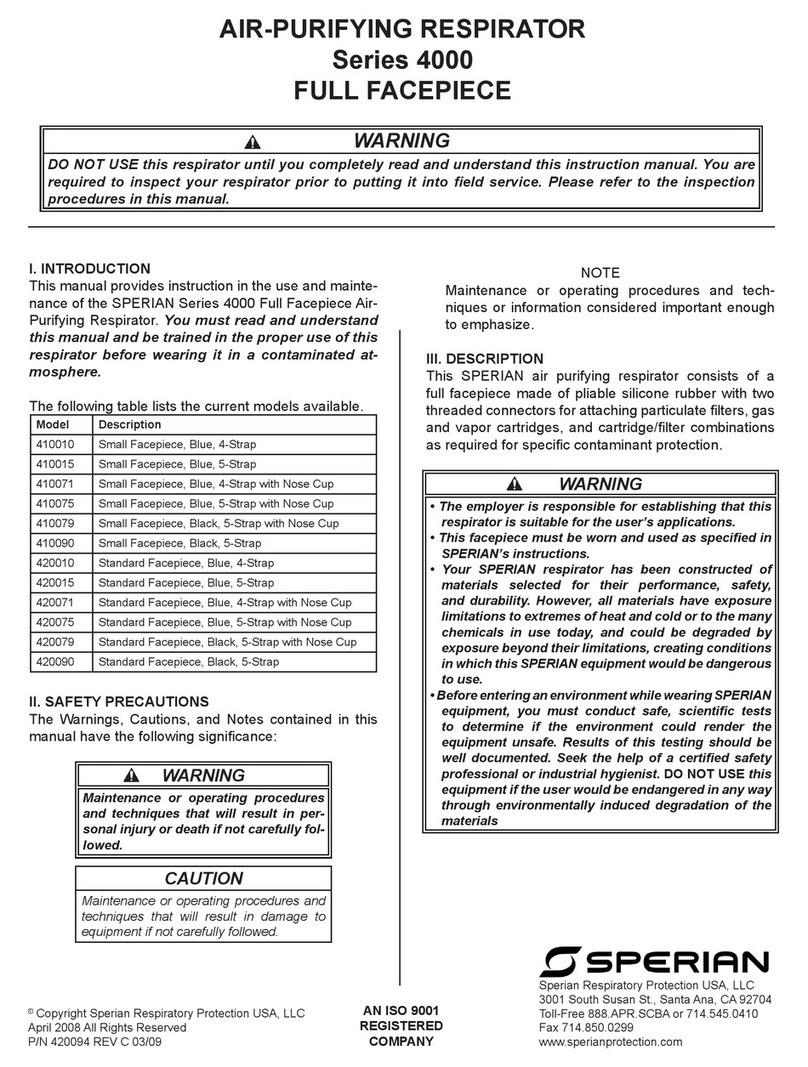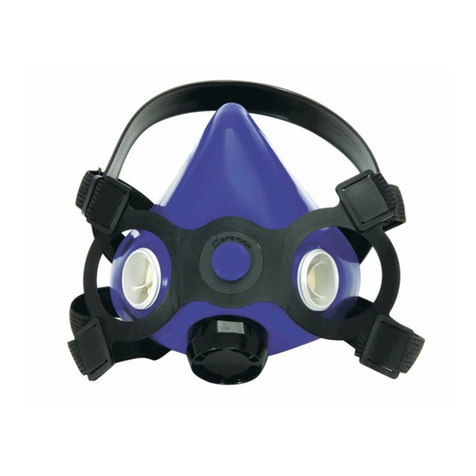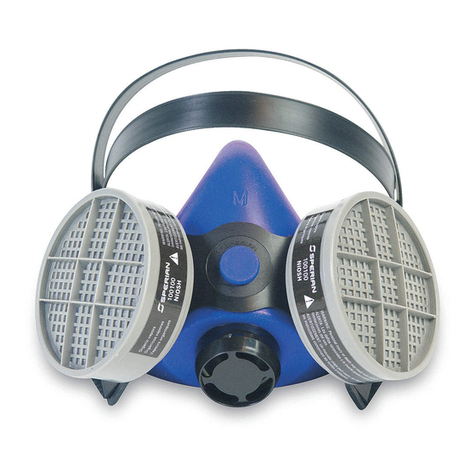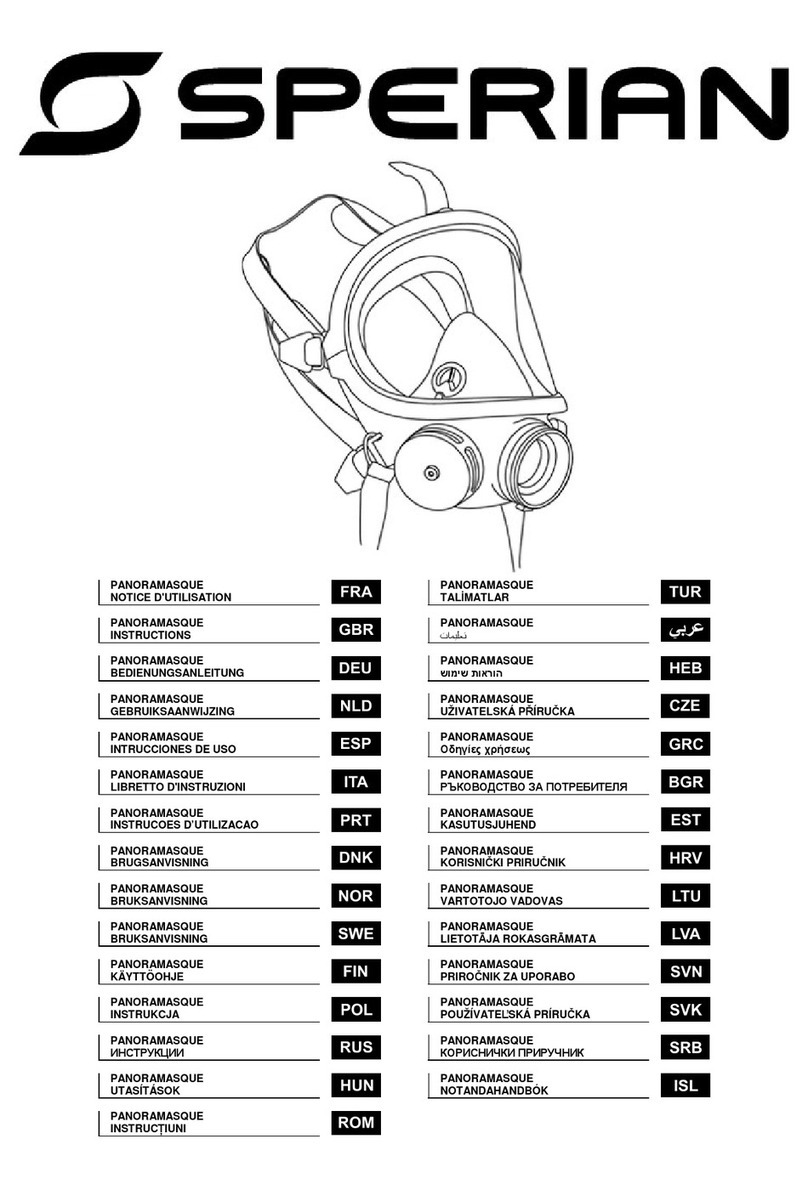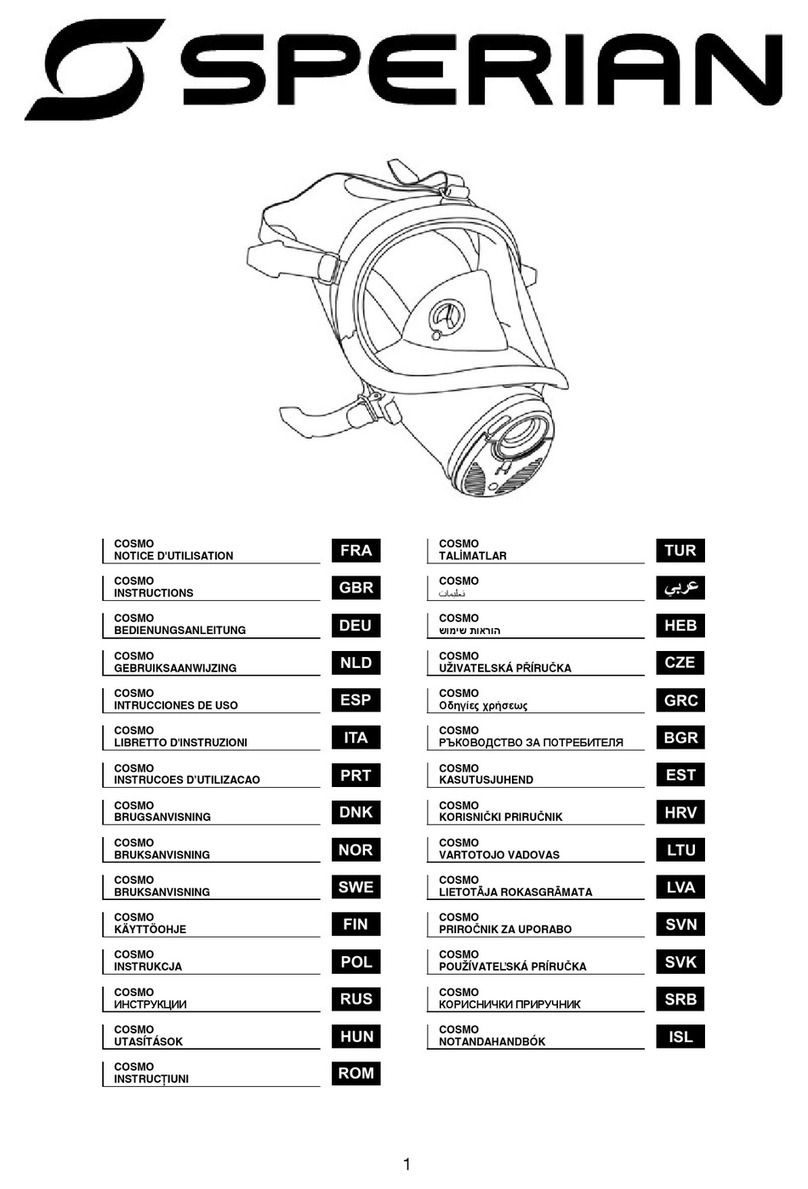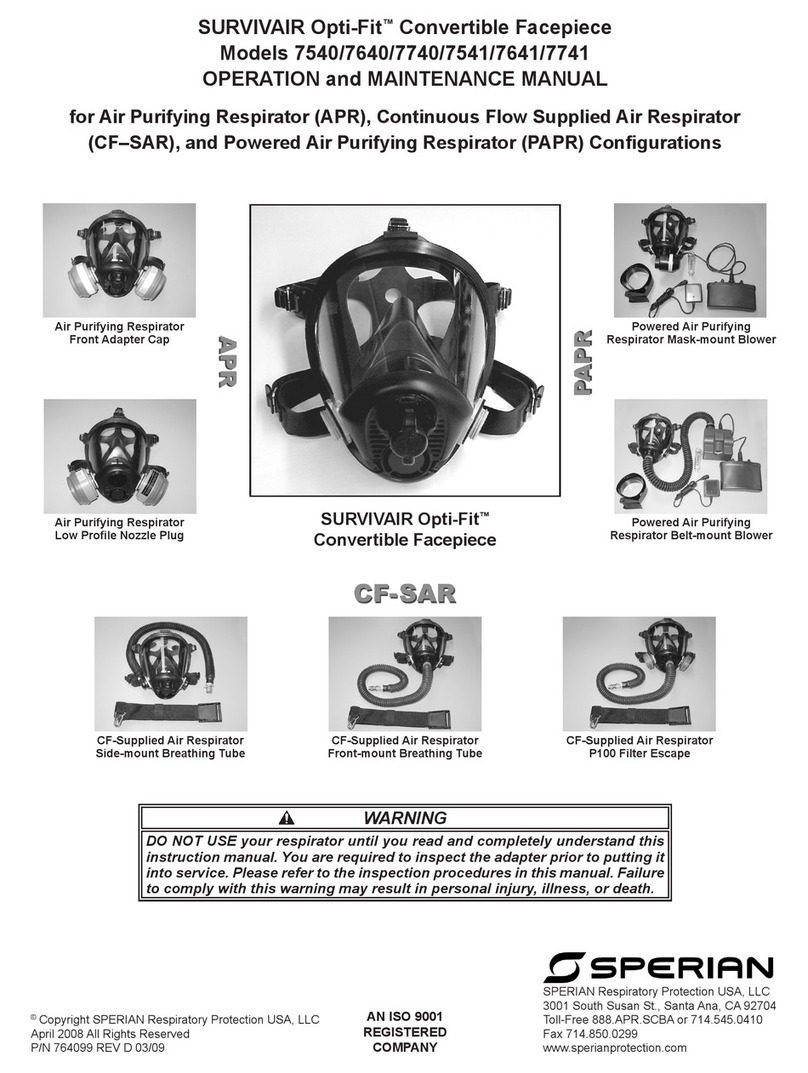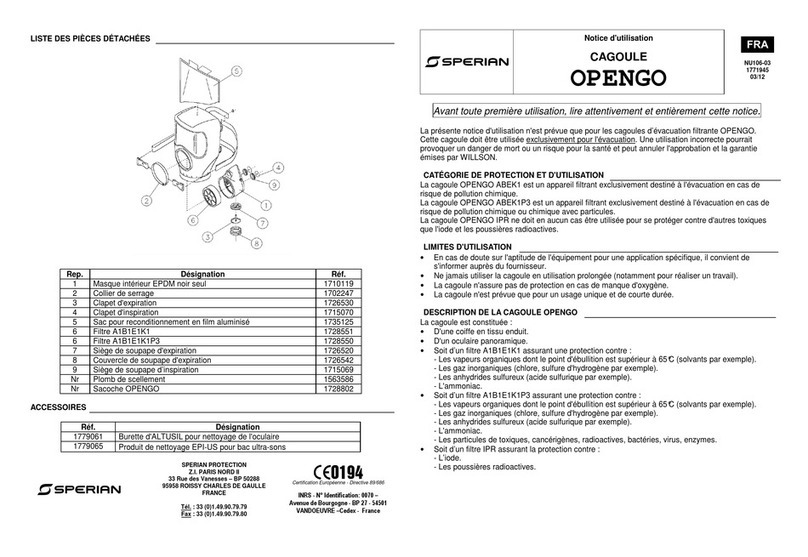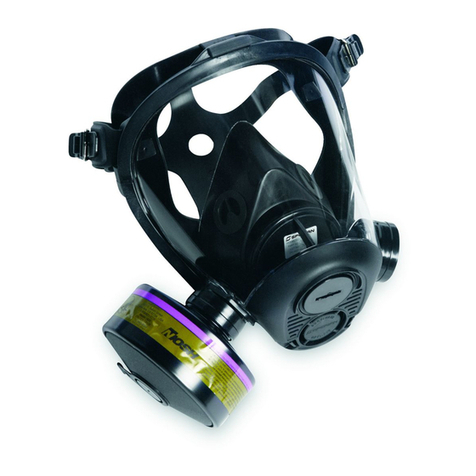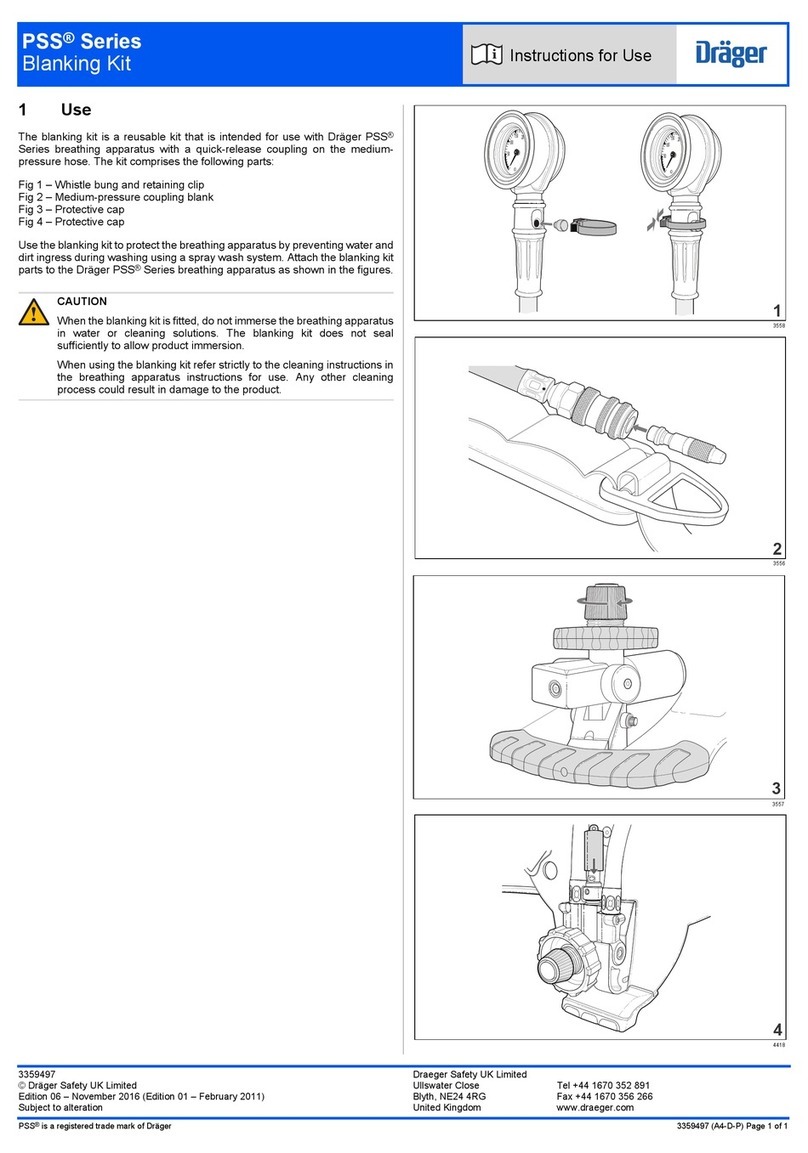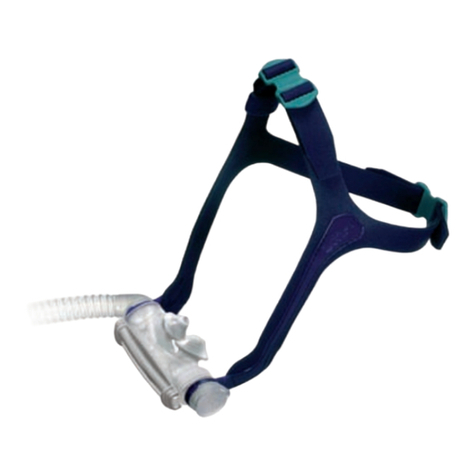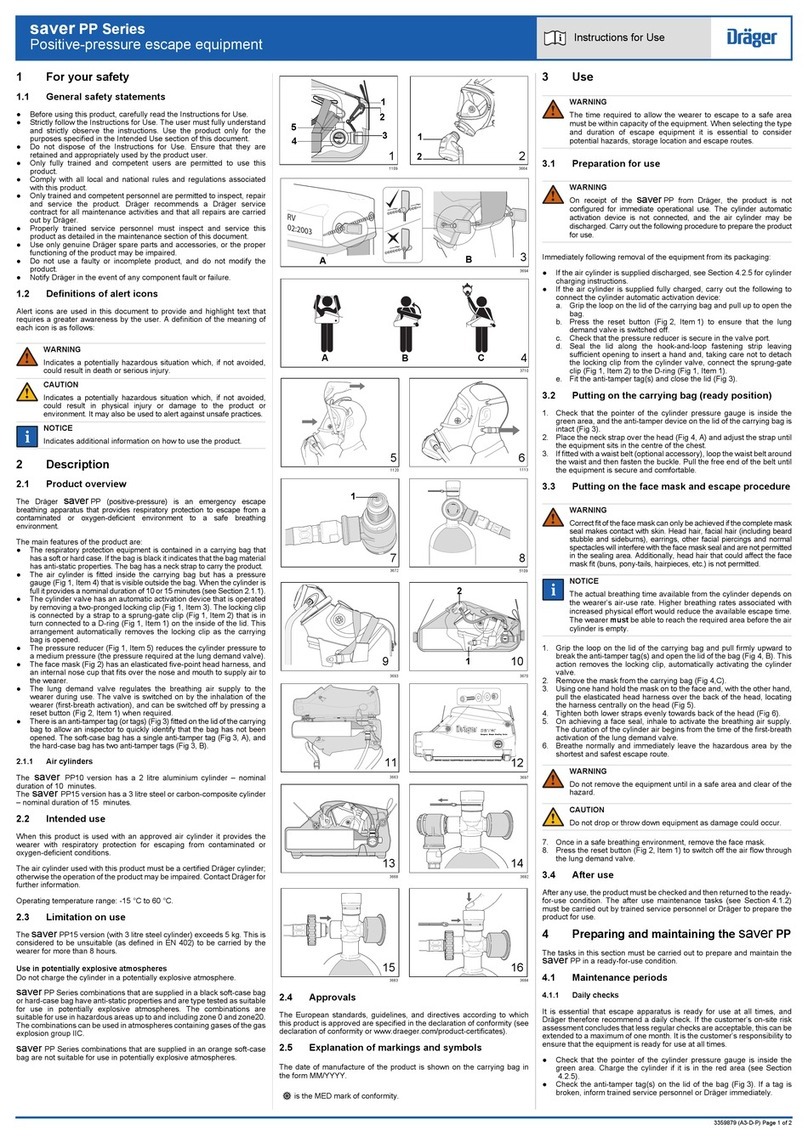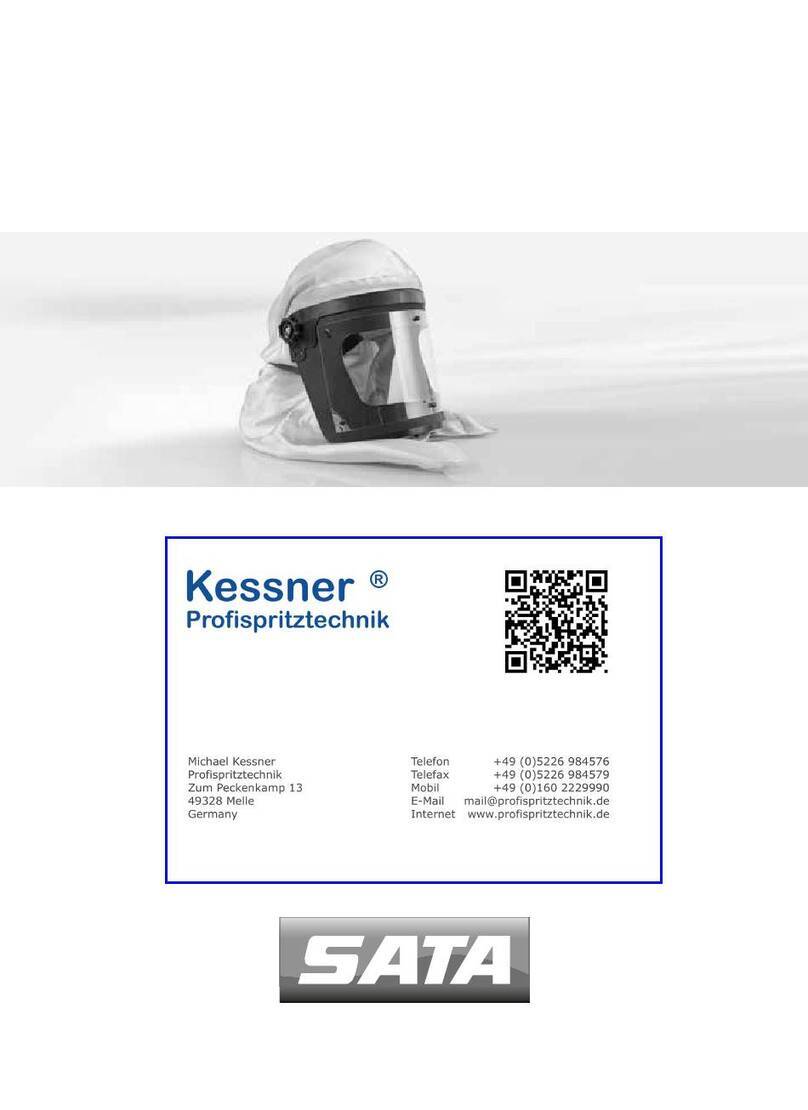
6
WARNING—Continued
sensitizers. Use positive pressure supplied air respirators to provide
better protection from these chemicals. Do not use this respirator if
you have been sensitized from previous exposure or believe that you
may be sensitive or allergic to any chemical (e.g., isocyanates, latex,
etc.) until you obtain clearance from a medical doctor.
• Use of components other than those listed on the NIOSH approval label
and in this manual, or as authorized by Sperian, or modication of this
respirator in any manner will void the NIOSH certication and invali-
dates all Sperian’s warranties for the respirator.
• Always read and follow the instructions listed in the Material Safety
Data Sheet for the chemicals that are present in the work area.
• Do not use if you have a preexisting skin condition (for example, follicu-
litus or vitiligo) until you obtain clearance from a medical doctor.
• This respirator must be worn and used as specied in Sperian’s instruc-
tions. No respirator can provide complete protection from all condi-
tions. Use extreme care for emergency conditions.
• Some individuals are sensitive to chemicals (e.g., isocyanates, latex, oil
mists, etc.) or may have some type of respiratory disorder (e.g. asthma,
chronic obstructive airway disease, etc.). If you are sensitive to any
chemical or have a respiratory disorder, you may have a severe reac-
tion at contaminant levels well below accepted health levels, such as
the OSHA Permissible Exposure Limit (PEL), ACGIH®Threshold Limit
Value (TLV), or the NIOSH Recommended Exposure Limits (REL). Many
chemicals (e.g., isocyanates, mercury, etc.) have no physical warning
properties and you cannot taste or smell the contaminants even though
they may be present in the respirator facepiece. This respirator will re-
duce, but will not eliminate the possibility of contaminants entering the
facepiece and causing a severe reaction. Do not use this respirator un-
til you obtain clearance from a medical doctor.
• Do not alter or modify any respiratory product.
• If this respirator will be used during welding, it is the user’s responsibil-
ity to obtain the proper equipment for protection against sparks, optical
radiation, and impact. This respirator will not protect you against these
hazards.
• Users must clean and maintain this respirator only in accordance with
Sperian’s instructions. Accessories not offered by Sperian may de-
grade performance, and will void NIOSH certication.
• The respirator facepiece assembly contains natural rubber latex which
may cause allergic reactions in some individuals. Discontinue use if
you experience an allergic reaction.
• Discontinue use if you experience skin irritation or discoloration.
• This product may provide less than adequate protection if improperly
used, which may result in personal injury, illness, or death.
• For use by trained, qualied personnel only.
• Routinely used respirators must be inspected before and after each
use. Stored emergency respirators must be inspected after each use
and at least once every 30 days. A written record must be kept of in-
spections of emergency respirators.
• FAILURE TO OBSERVE ALL WARNINGS MAY RESULT IN PERSONAL
INJURY, ILLNESS, OR DEATH.
